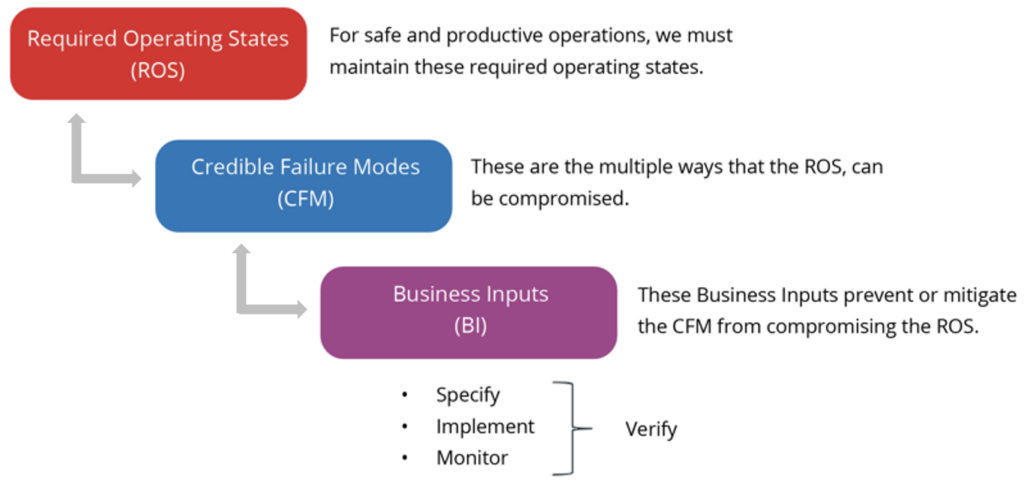Control Effectiveness Approach
Baseline control effectiveness analysis technique
Since 2017, EMERST has been developing the control effectiveness technique and this is now a core operational process used for all new Industry projects. The control effectiveness technique is a highly iterative and adaptive process that begins with asking:
‘What has to be in place for work to go right?’
It uses these organising questions to organise the knowledge and experience of contributors:
- What is the business purpose?
- What safe and productive operating states are required to deliver the business purpose?
- What can cause failure?
- What are the business inputs that prevent or mitigate failure?
- What is the expectation of these business inputs and how are they?
- Specified
- Implemented, and
- Monitored
The Technique is aligned with Failure Modes and Effects Analysis, Human Factors, and the definition elements of the ICMM Critical Control Methodology. It allows real-world inputs and experience to be mapped to the safe and productive operating states required to deliver business purpose.
The mapping step uses these interlinked hierarchical components to develop a deep understanding of complicated problems:
- Required Operating States (ROS) that deliver business purpose
- The Credible Failure Modes (CFM) that can compromise Required Operating States – these are validated by incident experience
- The Business Inputs (BI) that support the establishment and maintenance of the required operating states by preventing or mitigating the credible failure modes – these are mapped into the control effectiveness from operational practice
Each Business Input has a clear title, an expectation it should deliver upon, a specification, a description of how it is implemented, and details of how its status is monitored and verified.
Using the baseline control effectiveness technique establishes both a ‘whole of system’ overview and a structure that is linked to detailed operational practice. Working this way provides information and insights about the dynamic interconnects between personnel, equipment, the work environment, workgroups carrying out different tasks and overall coordination. This promotes the systematic identification of improvement opportunities.
It is also a flexible technique that allows the ongoing updating of all the control effectiveness component descriptions, content, and links as new information becomes available and new insights develop. Applying the control effectiveness technique produces the networked and hierarchical structure represented in the figure below.
Figure: The hierarchy and components of control effectiveness.

Developing control effectiveness requires the systematic review and assessment of the robustness and reliability of business inputs. It follows these steps:
- Confirm the safe and productive outcomes relevant at an enterprise level, these Required Operating States (ROS) are the basis of the control effectiveness, e.g. Operators Give Way
- Identify and catalogue the credible failure modes that can compromise each required operating state
- Based on each credible failure mode, identify the business inputs that prevent or mitigate the required operating states being compromised
- Using site documentation and knowledge, map how each business input is specified, implemented, and monitored to prepare a control effectiveness Version 1
- Present the control effectiveness Version 1 to knowledgeable employees for review, updating and validation to Version 2 (baseline)
- From the validation workshop, confirm the opportunities for improvement required to achieve expected control effectiveness mobile equipment interaction control performance and present for senior management review
- Use the control effectiveness information as a reference when considering further improvements to vehicle interaction controls including developing user requirements for technology providers
For more information regarding the control effectiveness analysis technique please send an email to enquiries@emesrt.org.
